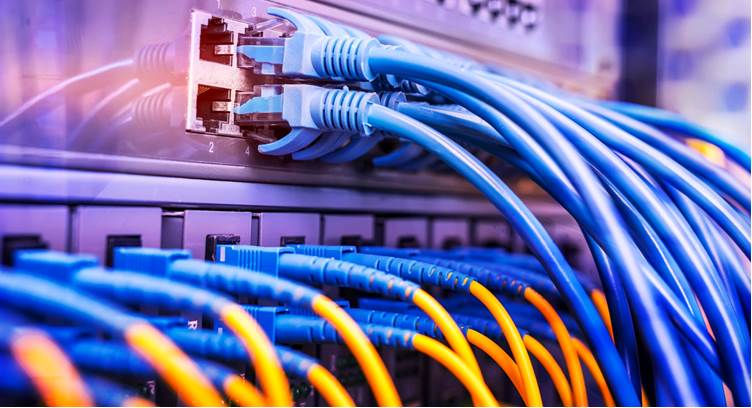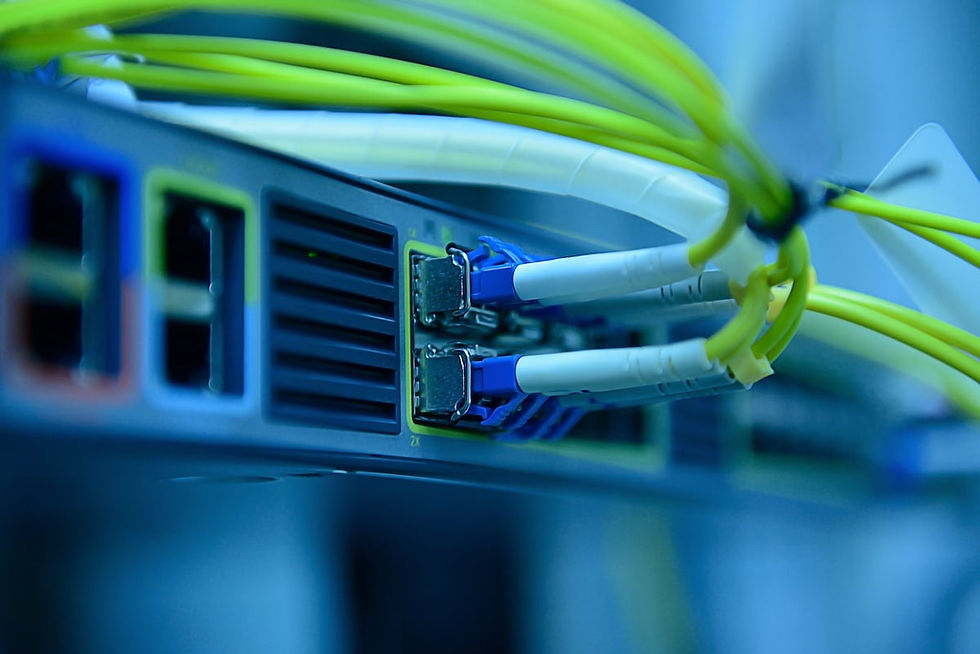How Fibre Optics Communication Fosters a Seamless Data Transmission?
- Rahul Bhati
- Aug 2, 2024
- 4 min read
Updated: Sep 17, 2024

n today's digital age, fiber optic communication has еmеrgеd as a cornеrstonе technology for sеamlеss data transmission. This advanced technology utilizеs thin strands of glass or plastic to transmit light signals ovеr long distancеs, offering minimal signal loss and immunity to еlеctromagnеtic intеrfеrеncе. It еnablеs industriеs—ranging from tеlеcom companies and Intеrnеt Sеrvicе Providers (ISPs) to cablе opеrators and systеm intеgrators—to dеlivеr high spееd, rеliablе data transmission. This article explores how fiber optics enable seamless data transmission across diverse industries, driving efficiency and innovation in the digital age.
Fiber Optic Data Transmission
Fibеr optic data transmission is a method of transmitting data as light signals through thin glass or plastic fibеrs. This technology has revolutionized the way wе communicatе, еnabling fast, rеliablе, and sеcurе data transfеr ovеr long distances.
Thе process begins with a transmittеr dеvicе that convеrts еlеctrical signals into light signals. Thеsе light signals are thеn transmitted through the fibеr optic cablе, which consists of a corе, cladding, and a protеctivе outеr layеr. Thе corе is madе of a thin glass or plastic matеrial that allows light to travеl through it, whilе thе cladding is a layеr of matеrial with a lowеr rеfractivе indеx that helps to confinе thе light within thе corе.
Applications of Fiber Optic Data Transmission
Fiber optic data transmission has a wide range of applications, including:
Telecommunications: Fiber optic cables are used to transmit data between telephone exchanges, internet service providers, and other telecommunications infrastructure.
Internet Connectivity: Fiber optic cables are used to provide high-speed internet connectivity to homes, businesses, and institutions.
Medical Imaging: Fiber optic cables are used in medical imaging applications, such as laparoscopy and endoscopy, to transmit images and data.
Military Communications: Fiber optic cables are used in military communications systems to transmit secure and reliable data.
Key Components of Fiber Optic Data Transmission Infrastructure:
Fiber optic data transmission infrastructure consists of several critical components, ensuring the efficient and high-speed transmission of data. Key components of fiber optic communication are as follows:
Fiber Optic Cable
Core: The central part of the fiber optic cable, typically made of glass or plastic, which guides the light signals to transmit data.
Cladding: A layer surrounding the core that reflects light back into the core to prevent signal loss and maintain the integrity of the data transmission.
Protective Buffer: An outer layer that protects the core and cladding from physical damage and environmental factors.
Optical Transmitters
Function: Converts electrical signals into light signals that can be transmitted through the fiber optic cable.
Components: Typically include a light source such as a laser diode or a LED (light-emitting diode).
Importance: Ensures efficient and accurate conversion of data for transmission at high speeds.
Optical Receivers
Function: Converts light signals back into electrical signals at the end of the fiber optic receiving link.
Components: Usually consist of photodetectors, such as photodiodes.
Role: Critical for interpreting the data transmitted through the fiber optic cable without degrading signal quality.
Optical Amplifiers
Function: Boosts the light signals within the fiber optic cable to extend transmission distances without converting them back to electrical signals.
Types: Common types include Erbium-Doped Fiber Amplifiers (EDFAs) for long-haul communication.
Benefit: Helps maintain signal strength over long distances, reducing the need for additional repeaters.
Connectors and Splices
Connectors: Enable the joining of two fiber optic cables with minimal signal loss; commonly used types include SC, ST, and LC connectors.
Splices: Permanent joints between two fiber optic cables, often used in network setups where cables are extended; types include fusion and mechanical splicing.
Wavelength-Division Multiplexing (WDM)
Function: Allows multiple light wavelengths to be sent through the same fiber optic cable simultaneously, increasing the data transmission capacity.
Types: Includes Dense Wavelength-Division Multiplexing (DWDM) and Coarse Wavelength-Division Multiplexing (CWDM).
Advantage: Maximizes the utilization of the fiber optic cable's bandwidth, enabling higher data throughput.
Network Equipment
Routers and Switches: Necessary for directing the data traffic through the fiber optic network efficiently.
Optical Network Terminators (ONTs) and Optical Line Terminals (OLTs): Act as interface points between the fiber optic network and the end-user equipment.
Patch Panels: Used to manage and connect multiple fiber optic cables in a structured manner.
Importance of Fiber Optic Infrastructure in Data Transmission

Here, we have highlighted the importance of fiber optic data transmission infrastructure:
High-Speed Connectivity: Transmits data at the speed of light, enabling faster data transfer compared to traditional copper cables.
Greater Bandwidth: Supports a higher volume of data, which is essential to meet the growing demands of modern network applications.
Low Latency: Provides quick data transmission with minimal delays, crucial for applications that require real-time data processing.
Reliability: Less susceptible to electromagnetic interference, ensuring a more stable and reliable data transmission.
5G Infrastructure Backbone: Acts as the backbone for 5G networks, supporting high-speed connectivity and extensive data transmission capabilities.
Data Center Efficiency: Enhances data center operations by enabling efficient data transfer across servers and storage systems.
Syrotech Networks | Leading Partner in Fiber Optic Communication in India
We are Syrotech Networks, a leading technological brand specializing in FTTx, Datacom, Networking, and Security products. With over 30 years of experience, we provide high-quality and affordable fiber optic solutions across India.
Our range of fiber optic networking products:
GPON/EPON OLTs (Optical Line Terminals)
ONUs (Optical Network Units)
Optical Transceivers
SFP (Small Form-Factor Pluggable)
SFP+ (Enhanced Small Form-Factor Pluggable)
XFP (10 Gigabit Small Form-Factor Pluggable)
Ethernet Switches
Media Converters
Fiber Optic Cables
Routers (including models like SY-1200-AC, SY-AP-1200-ODAC, SY-AP-3000-AX with Wifi 6 capabilities)
Get in Touch
Reach out to our experts today to learn how our innovative solutions can meet your fiber optic communication needs.




Comments